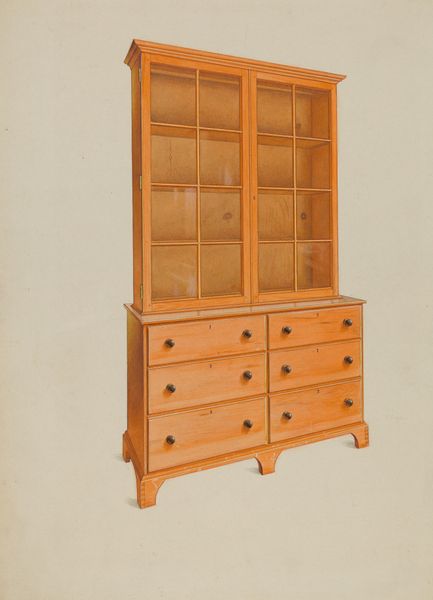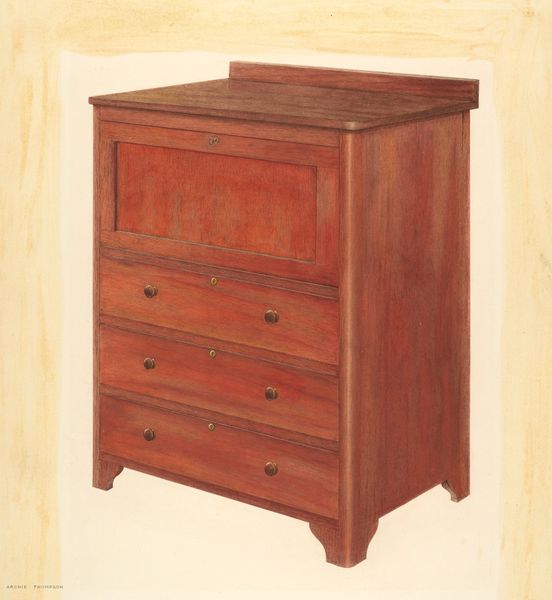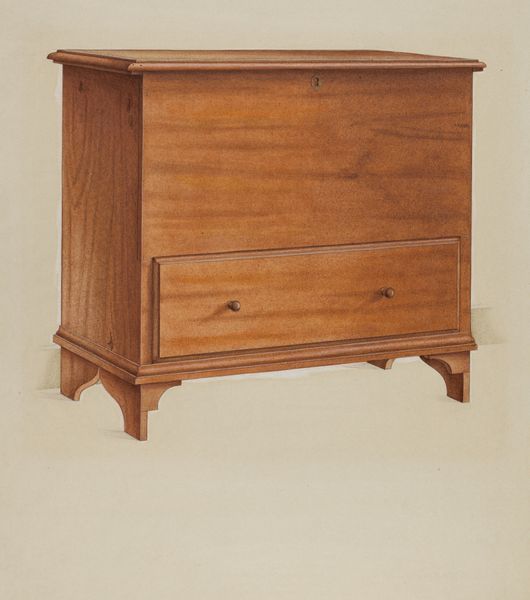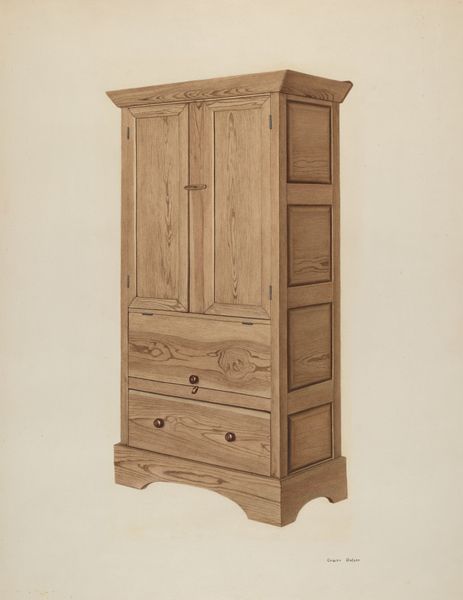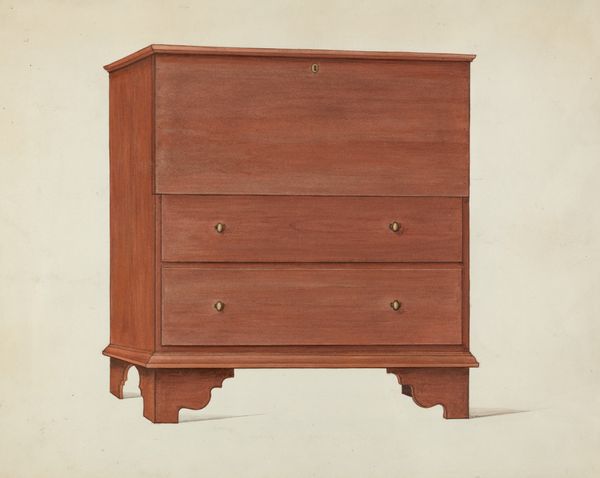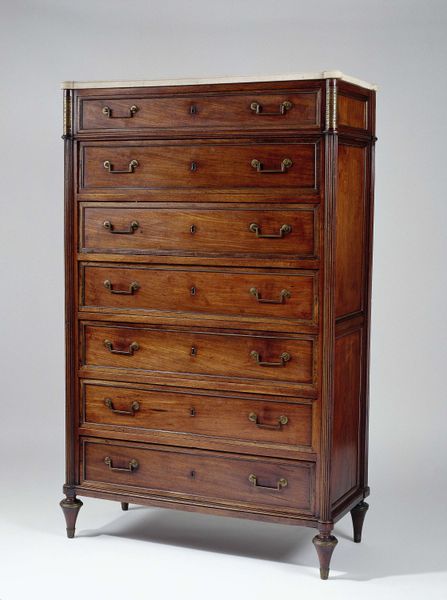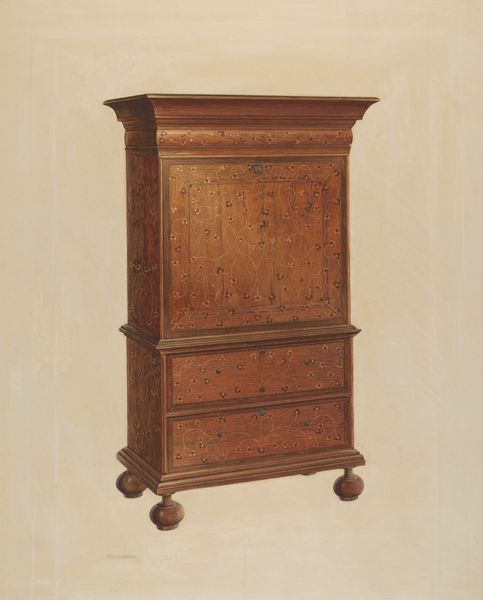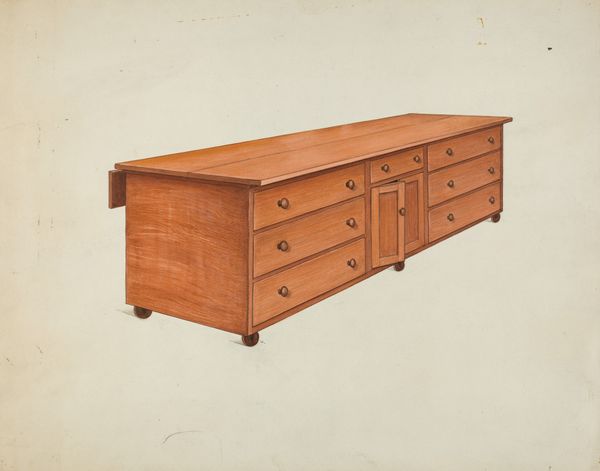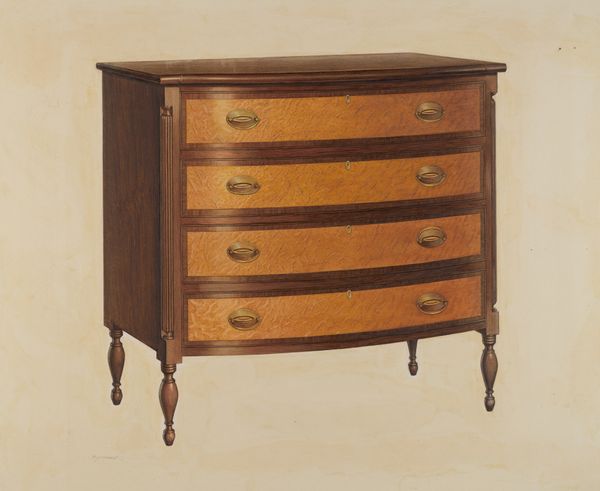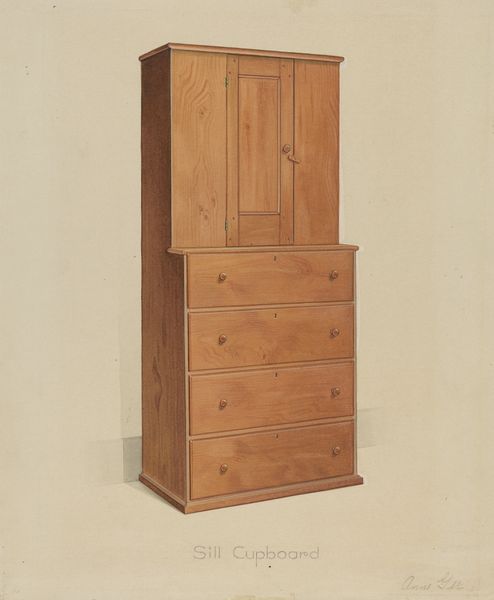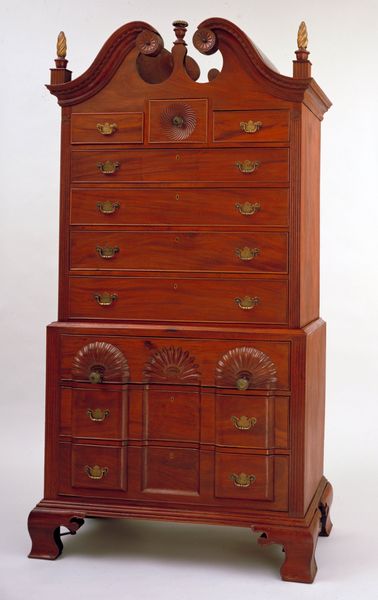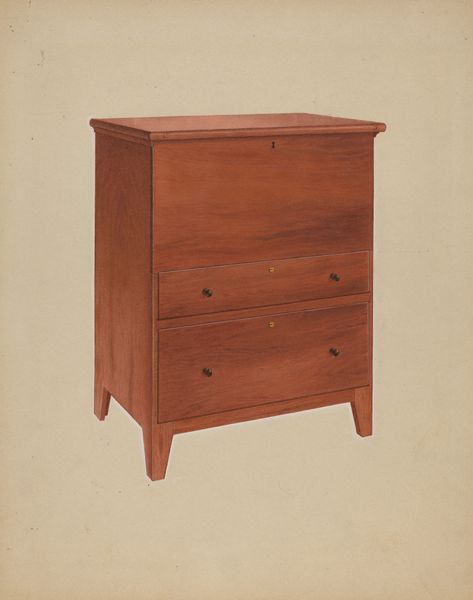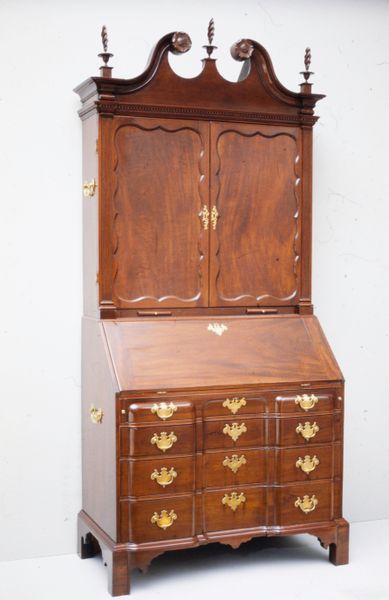
drawing, wood
#
drawing
#
wood
Dimensions: overall: 26.3 x 21.5 cm (10 3/8 x 8 7/16 in.)
Copyright: National Gallery of Art: CC0 1.0
Editor: We’re looking at a drawing of a "Shaker Cabinet," made around 1936. The artwork uses wood as a primary material. What immediately strikes me is its almost mathematical arrangement, the grid formed by the drawers and doors. How would you interpret this piece? Curator: Precisely. The visual language speaks volumes. Focus first on the cabinet’s form. Note the rectilinear shapes, the repetition of the drawers, and the balanced symmetry. It subscribes to an almost Platonic ideal. This object presents a study of pure form and function; it doesn’t need to rely on color to achieve impact. What purpose do you think that visual decision achieves? Editor: Perhaps it highlights the texture and natural variations within the wood itself, allowing the craftsmanship to come forward? The artist Anne Ger wants us to contemplate on form? Curator: Yes, exactly. The very specific aesthetic choices that an artist makes. A minimalist visual effect can, paradoxically, demand even closer attention to line and plane. What philosophical traditions does this arrangement recall for you? Editor: The emphasis on functionality reminds me of the Bauhaus movement—an exploration of rational forms that strip away ornamentation. Curator: Precisely. Think about how that concept interacts with philosophical approaches such as existentialism or transcendentalism. Can you sense a narrative around being? Editor: I see what you mean; there's a stillness and deliberate lack of distraction that asks viewers to engage with the object and maybe even with themselves. Thanks for this discussion. Curator: My pleasure. Studying the intentionality and the considered structure will help in analysing visual texts, every time.
Comments
No comments
Be the first to comment and join the conversation on the ultimate creative platform.
